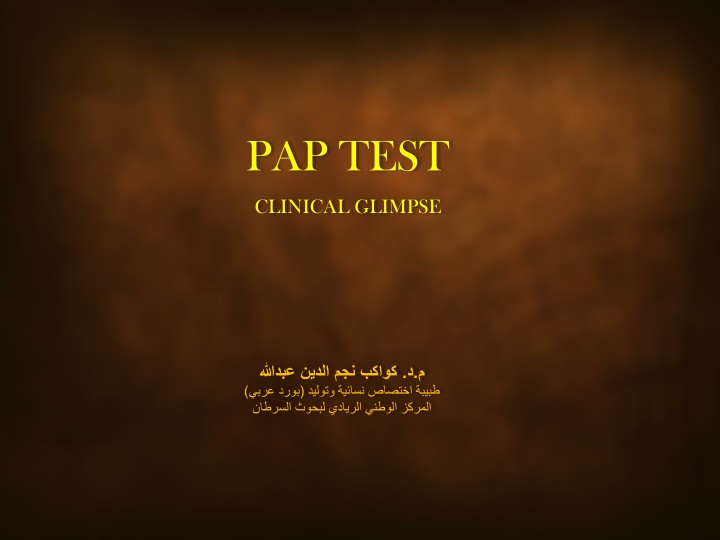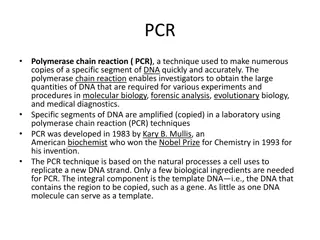
Pap Test for Cervical Cancer Screening
Learn about the Pap test, a crucial screening tool for early detection of cervical cancer, its frequency, advantages, reasons for failure, cervical sampling techniques, and more. Discover the importance of mass screening programs and how they contribute to public health.
Download Presentation

Please find below an Image/Link to download the presentation.
The content on the website is provided AS IS for your information and personal use only. It may not be sold, licensed, or shared on other websites without obtaining consent from the author. If you encounter any issues during the download, it is possible that the publisher has removed the file from their server.
You are allowed to download the files provided on this website for personal or commercial use, subject to the condition that they are used lawfully. All files are the property of their respective owners.
The content on the website is provided AS IS for your information and personal use only. It may not be sold, licensed, or shared on other websites without obtaining consent from the author.
E N D
Presentation Transcript
PAP TEST CLINICAL GLIMPSE ( . . )
MASS SCREENING PROGRAMME It is a series of diagnostic and therapeutic services offered actively and free of charge to an apparently healthy population and promoted by a National Health Service with the aim of early diagnosis of the disease, before symptoms appear PAP Test is one of the measures of Cervical Cancer Screening
WHAT IS PAP TEST? It is the screening test for pre-invasive and early invasive cervical cancer which is carried out on a sample of cells obtained from the cervix, It was developed by the prominent Greek doctor Georgios Papanikolaou
FREQUENCY OF PAP TEST Cost-effective analysis suggest the Pap test should be routinely performed every 3 years; it is more important to screen all women within (25-64 age group) than to screen the same women at more frequent intervals. ADVANTAGES OF PAP TEST Simple Offers rapid detection Sensitive Non invasive Low cost method
REASONS FOR FAILURE TO DETECT CERVICAL NEOPLASIA Incorrect sampling of cervical epithelium. Failure of transfer of significant biological material from sampling devices to the slide. Incorrect slide processing, administrative and clerical errors. Incorrect interpretation of the smear at light microscope (reporting error).
CERVICAL SAMPLING TECHNIQUE - GENERAL INFORMATION To obtain accuracy in Pap testing it is necessary first of all to obtain a representative cellular sample for examination. The sample should contain cells from the ectocervix, endocervix and the transformation zone (ESPECIALLY). It is not always possible to identify the TZ because the position changes during the course of a woman s lifetime, according to her age and phase of her reproductive life. Whenever the endocervix cannot be reached easily with the Ayre s spatula, a cytobrush or cone-shaped endo-cervical brush must be employed.
CERVICAL SAMPLING TECHNIQUE - GENERAL INFORMATION CERVICAL ZONES
CERVICAL SAMPLING TECHNIQUE - GENERAL INFORMATION PATIENT S POSITION DURING THE PROCEDURE






















